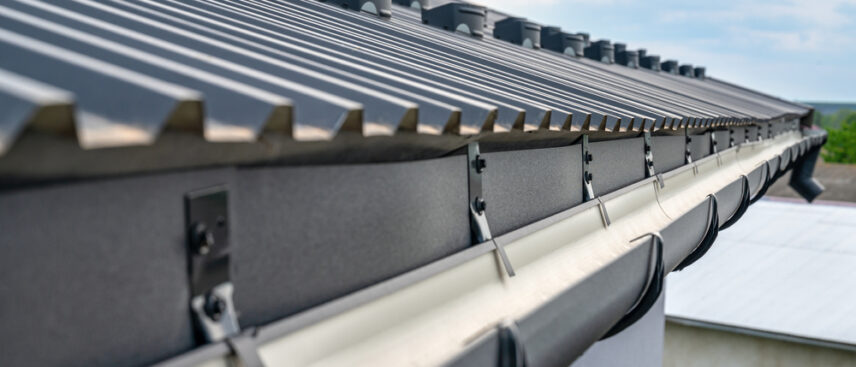Gutters capture the water flowing off your roof’s edges and direct it away from your home. While homeowners in very dry areas may have the option of skipping them, they’re recommended to prevent damage in most climates. Failing to install gutters risks damage to the home’s structure starting from the bottom up, while improper installation can damage the roof.
Get the right gutters for your home and ensure that the water heads somewhere it soaks in safely with this guide.
The Importance of Gutters
No matter the style, gutters are designed to gather water. Without them, the water flows directly off of the roof’s edge. Most homes feature minimal edge length today for a clean look, leaving the runoff from your roof pouring directly down next to your foundation.
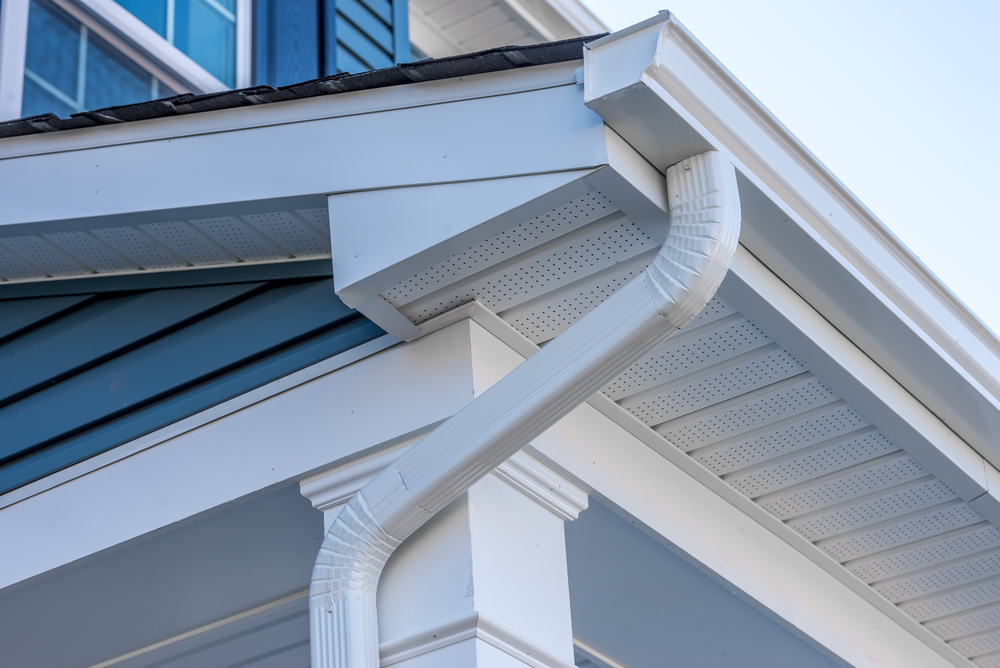
Protecting Your Foundation
Your home’s foundation supports it but needs support from the soil around it. The same concrete used to hold up the weight of the structure can also allow water to flow into the basement or crawlspace due to its porous nature. By using gutters to keep water from dropping next to the foundation, you’ll keep the soil in place and prevent gradual erosion. Movement or loss of the soil leaves the foundation unsupported. You’ll notice cracks in your basement or crawlspace walls, which leads to further leaking and may damage the rest of your home’s structure.
Preventing Basement Flooding
As mentioned before, letting your roof erode the soil around your foundation can damage it. Once the foundation is compromised, basement flooding is almost guaranteed. Yet, it can occur even without visible cracks or other damage to the structure of the foundation. Basement walls are made from porous concrete. Even with extensive waterproofing efforts, water that is directed toward the walls tends to make it inside to cause mold and mildew issues. Directing water away from the basement with the right set of gutters and downspouts is the best way to keep it dry year-round.
Safeguarding Your Roof & Siding
Without gutters, water can run down the side of your home and damage the siding. The exterior walls under the siding may lack a water-resistant layer to keep the moisture out. This leads to further rot and mold problems that may go undetected for years. To protect your home’s exterior and the roof’s edges from water damage, you need high-quality gutters that can handle heavy storms.
Signs You Need New Gutters
Does your home already have gutters? You may still need a new set to keep your home protected from the effects of moisture. If you’re noticing any of these signs that your gutters are aging or damaged, consider an upgrade.
Damaged or Leaking Gutters
Any visible signs of damage, like holes, cracks, or rust, indicate that the gutters are nearing the end of their lifespan. No matter the material, all gutters eventually wear out due to weathering and constant water exposure. Gutters with visible damage will leak and are likely to clog up more easily. This increases the risk of damage to both the foundation and the roof.
Overflowing or Clogged Gutters
When gutters become easily clogged or overflow because they’re too small for your roof, they can back up and push water onto the roof itself. Water easily soaks under most roofing materials, including asphalt shingles. Properly sized gutters can handle even the heaviest rainfall your area experiences to prevent overflowing. They’ll also offer easy cleaning or come with guards that keep leaves and other debris out of the channel.
Missing or Sagging Gutters
Don’t let missing sections of the gutters go without repair. When gutters break loose or aren’t installed properly in the first place, the water flow is interrupted and may dump somewhere that leaves your yard flooded. Make sure none of your gutters are sagging either since the water will overflow at the lowest point rather than reaching the downspout that carries it away from your foundation.
Absence of Gutters
Most homes without gutters will benefit from them. Even if you live in a dry climate with relatively little rainfall, the occasional heavy storm could leave your basement flooding as water rushes straight down from the roof’s drip edge. Installing gutters also protects your landscaping and may improve your home’s overall value.
Types of Gutters
There are many designs and materials to choose from, but most gutters fall into one of two main categories.
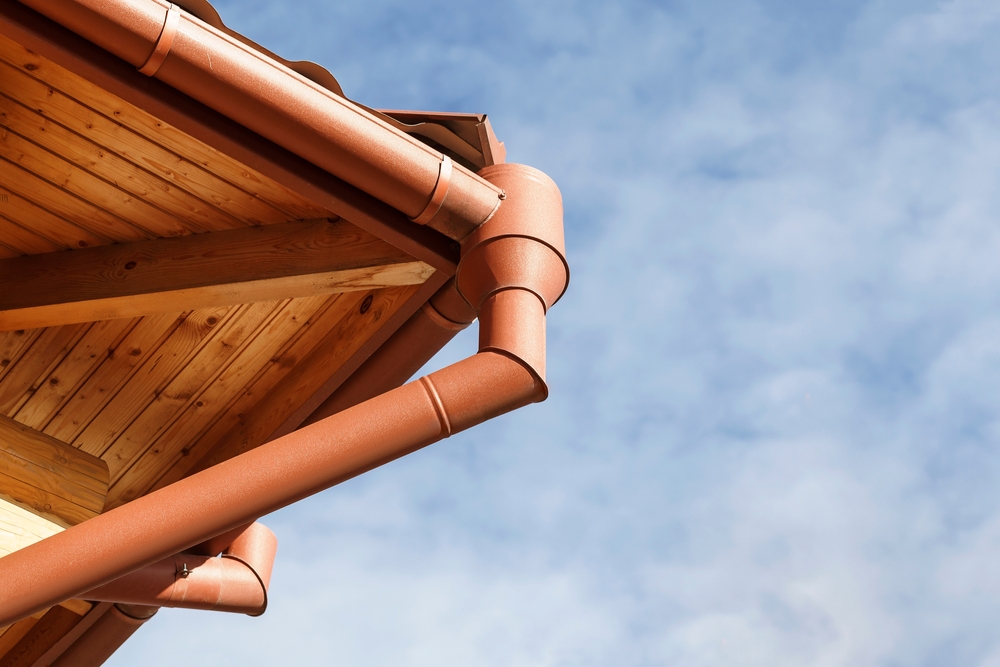
Seamless Gutters
Seamless gutters are built to minimize seams between sections of the material. They’re generally made from aluminum or steel, which is durable but relatively easy to shape with the right set of tools. This allows for various sizes to ensure you’re getting the flow capacity you need for optimal water management. There’s a reduced risk of leaks due to the reduced number of seams, while many homeowners choose them specifically for the smooth and aesthetically pleasing appearance.
Sectional Gutters
Sectional gutters are more affordable than the seamless variety thanks to an easier installation process and tend to last nearly as long. They’re also available in a wider variety of materials like vinyl, aluminum, and steel. However, you’ll need to check them regularly, and they may need cleaning more often since the seamed design can trap more leaves.
Gutter Installation Process
Each gutter installation process is unique, so you may need some patience when going through the process. Getting custom or specialty gutters will likely extend the timeframe for your installation. Even when you’re leaving the work up to the pros, you’ll want to double-check a few details to ensure the installation goes as smoothly as possible.
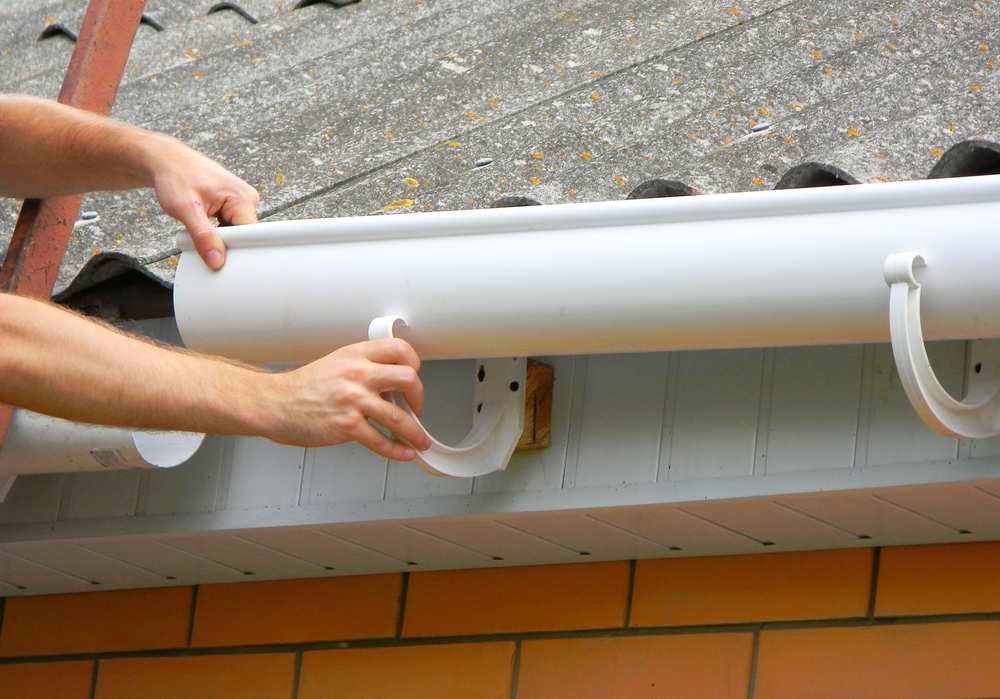
Choosing the Right Gutter Size and Style
The overall size of your roof, along with its pitch, determines the ideal size and shape for your gutters. A professional installation company can help you calculate the perfect size to carry away a large volume of water without overflowing. The steeper the pitch, the larger the gutters need to be to compensate for the extra speed added to the water’s flow. The main gutter styles include:
- K-style: Perhaps the most common style of gutters installed today, K-style designs hold a lot of water and secure strongly to the roof edge.
- Half-round: These gutters are beautiful and offer a classic look that can’t be beaten. They’re also easy to clean out due to the open design but harder to cover with leaf guards.
- Wide-bottom: For extra flow without having to install extra support on the fascia of your home, consider wide-bottom gutters.
- Box: Whether they’re square or slightly narrower on the bottom, box gutters are affordable and offer a modern look that matches minimalist exterior looks.
Proper Gutter Placement and Pitch
Each run of gutter material must rest just below the drip edge of your home’s roofing material. Placing the gutters too high or low will lead to splashing or overflow issues. The gutters must also feature a slight pitch towards the downspout, so water flows quickly and efficiently away from your home. Only professionals can get all these details perfect for gutters that protect your home for decades to come.
Installing Downspouts and Drainage Extensions
Downspouts aren’t just decorative features that finish off your gutter system. They’re necessary for capturing the water that flows through the gutters and sending it away from your foundation and home. Downspouts are easily connected to French drains, dry creeks, dry wells, and other drainage features to keep your landscaping from getting flooded. The key is envisioning the flow of the water from the roof to when it’s absorbed underground to avoid erosion and related issues.
Leaf Guards
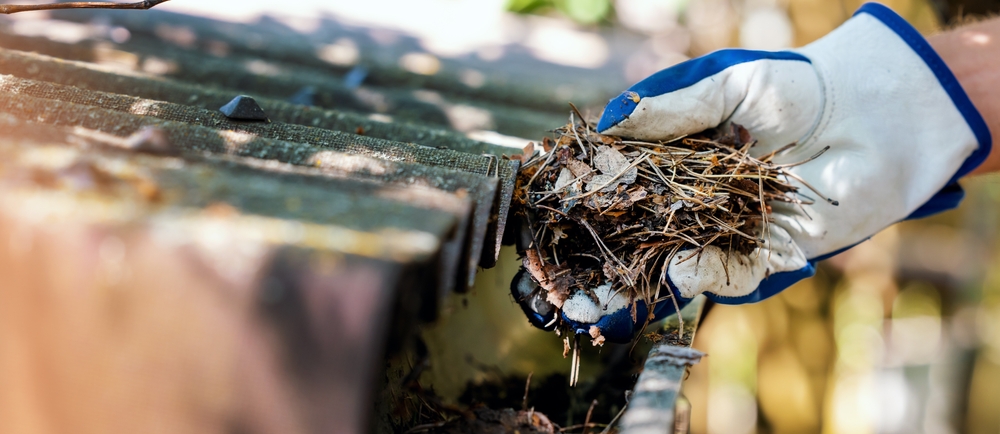
Leaf guards are an optional addition to your gutters that may help you reduce the number of times you need to clean them out each year. If you live on a wooded lot with plenty of leaves falling in the autumn, these guards can send the majority of that debris off of the surface rather than letting it build up inside the gutter channel.
Types of Leaf Guards
There are multiple types of leaf guards because each material works best for certain types of natural debris. Mesh leaf guards are easy to clear quickly by hand when needed, while they work best at trapping materials like leaves. Finer materials like micromesh trap even small pine needles and granules that wash free from your roofing. Screen and solid covers need more cleaning than other types, but they also control the widest variety of gutter-clogging materials.
Benefits of Installing Leaf Guards
While leaf guards need cleaning themselves occasionally, they greatly reduce the frequency of cleaning for the gutter channels. You’ll enjoy high drainage efficiency for months without having to get on a ladder or worry about dealing with heavy hoses. By preventing damage to your home that is caused by clogged gutters, you may save thousands of dollars in the long run.
Choose the right gutters for your home today with the help of local area installers.
